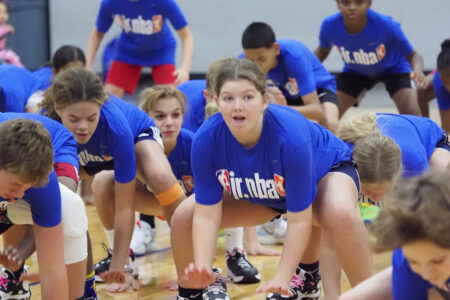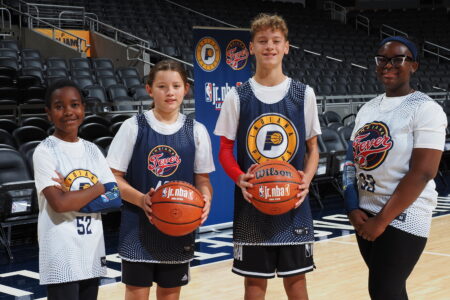How to Dribble a Basketball
1 March 2023
When NBA players dribble a basketball, they make it look effortless. But it takes a ton of practice—we’re talking years—to become a great ball handler. After all, there’s a lot that goes into this skill, from balance to footwork to coordination.
As a coach, you can break down the fundamentals to teach new players how to dribble—and make it seem less daunting. Follow this guide to set your team up for success.
One hand
The first, and most important rule when it comes to dribbling, is that you can’t use two hands. This results in a violation. Instead, you want to use one hand to control the ball, touching it with your fingers and fingertips—not your palm. Many kids will want to slap the ball at first but remind them that spreading their fingers out and using their fingertips will help them get a better grip on the ball. You also want to focus on not letting the ball bounce above their waist.
Eyes up
Your goal as a coach is to teach your players to dribble with either hand, without looking down at the ball. Dribbling is the best way to maneuver around the court and get past defenders, and it’s impossible to do that if you’re looking at the ground. Therefore, tell your players to keep their heads up, watching to see what the defense is doing and where their teammates are open.
Triple threat position
After your players get the hang of dribbling with one hand while looking up, you can explain the triple threat position. The term comes from the three options that are created by standing in this position—shoot, pass, or dribble the ball to the net. To be in a good triple threat position, your players need to spread their feet about shoulder-width apart, with a slight bend in their knees. If players are standing straight up, a defender can easily get into their space and force them backward. But in the triple threat position, they have greater balance and are ready to take off at a moment’s notice.
Shield the ball
It’s important to coach your players to maintain possession when dribbling. They can do this by shielding the ball with their non-dribbling arm to protect it. And when they’re at an appropriate age to begin scrimmaging, you can also teach them to keep their body between the ball and the defender. In other words, they don’t want to dribble the ball on the same side of their body that their defender is on.
Violations
As your players advance, you should cover the various violations around dribbling:
- Travel: Moving with the ball without dribbling
- Double dribble: Stopping and starting dribbling
- Carry: Catching the ball with one hand and then continuing to dribble (without stopping the dribbling motion)
To get more tips on coaching beginners, be sure to check out our Rookie Practice Plans.







